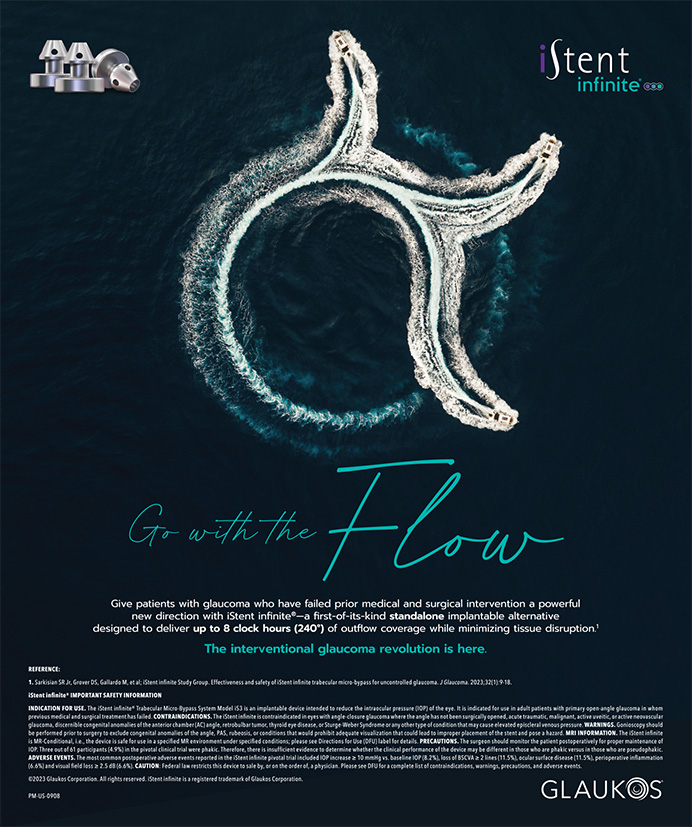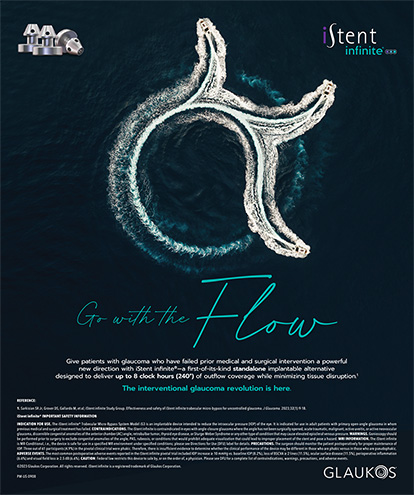In past issues of Cataract & Refractive Surgery Today, we discussed WhiteStar technology, a cold phacoemulsification technique by Allergan Surgical (Irvine, CA), which is capable of handling very hard cataracts. This technique significantly decreases the amount of energy delivered to the eye during phacoemulsification, resulting in a reduction of corneal burns. This article presents a view of the first findings in Barcelona, Spain.—The Editors
Although cataract surgery is the most frequently performed surgical procedure to date, there are still many issues that must be addressed in order for it to achieve a higher success rate. There are two methods of improvement addressed in this article: one method aims to create a smaller incision, and the second endeavors to facilitate removal of cataractous material, thus reducing intraocular surgery trauma.
SURGICAL IMPROVEMENT
The viable options in the arena of surgical improvement are divided into three groups: (1) manual techniques of breaking up the nucleus so that no phaco energy is released, thereby decreasing the risk of injury to intraocular tissues; (2) techniques that use energies other than classic ultrasound, ie, the erbium:YAG or neodymium:YAG lasers which are not associated with temperature increases; and (3) ultrasound techniques with better control of the energy delivery system. We are currently working with the third option.
Many manufacturers of phacoemulsification equipment have confidence in ultrasound procedures. The new WhiteStar system uses micropulsed, ultrasound energy and is therefore able to maintain the same degree of efficiency as traditional, nonpulsed ultrasound and reduce the amount of energy used by these traditional, nonpulsed ultrasound systems by approximately ten times. This significantly reduces intraocular injury and eliminates the need for the silicone sleeve covering the phaco needle to cool it. In addition, it enables the entry incision to be reduced to 1 mm, as it actually depends on the phaco needle diameter (0.8 mm, 21-gauge).
THE FIRST STUDY
In Barcelona, Spain, Carlos Vergés, MD, PhD, and I conducted the first research study that reported the efficacy of the new system currently known as cold phaco. This study showed that with the conventional phaco-cracking techniques, the average amount of energy used was 480 J. After the WhiteStar system was incorporated into the Sovereign phacoemulsification platform (Allergan Surgical), this average was reduced to 67 J. Cold phaco allows surgeons to perform cataract surgery based on microincisions. For this purpose, we have designed an irrigation chopper that makes the surgical maneuvers possible through two 1-mm incisions, reducing the hydrodynamic flow level in the anterior chamber as well as reducing the surgical time (Figure 1 and 2). The energy reduction and decreased hydrodynamic flow resulted in fewer variations in endothelial cell counts that were related to less tissue damage.
A preliminary study with 68 patients (72 eyes) divided in two groups, showed an endothelial cell loss of 3.7% after cataract surgery with WhiteStar (38 eyes), compared to the 6.9% endothelial cell loss reduction after cataract surgery with a standard phaco-cracking technique (24 eyes). In this study, we also analyzed the surgical time (nucleus emulsification and irrigation-aspiration times) in varying degrees of cataract hardness and there were no significant differences between the standard cataract surgery procedure and cold phaco technique. This means that the WhiteStar micropulsed ultrasound system does not reduce the phacoemulsification efficiency. The surgical times are not longer due to reducing the amount of energy used.
Another advantage of cold phaco is that the nucleus tends to be emulsified before the vacuum rises, so the surge in the anterior chamber is diminished and the chamber remains deeper than with traditional phacoemulsification. As I. Howard Fine, MD, of Eugene, Oregon, proposed, this allows the emulsification to occur at a posterior location, further away from the iris and the endothelium, which is obviously beneficial. This effect is possible because the ultrasound is broken up into pulses. Within each pulse, there is a burst of ultrasound and a rest period; these pulses are much more rapid than conventional ultrasound. This effect was observed when we analyzed patients' visual acuity 24 hours after surgery. In our study, BCVA was 0.73 with the conventional surgical technique and 0.84 with WhiteStar technology.
BENEFITS
We believe that the principal advantage of micropulsed ultrasound systems is that they enable us to work with conventional ultrasound equipment, ie, the best-developed fluidic systems combined with the advantage of reducing the amount of energy used. This is significantly important if we are to compare alternative techniques such as laser-assisted procedures that allow reduced energy without a thermal effect. However, they are not as effective in regard to nucleus-cracking maneuvers or maintaining the anterior chamber stability. The recent cold phaco technique findings that enjoy a low learning curve reported an improved postoperative visual recovery in patients treated with this procedure.
One critical factor in performing phacoemulsification is to change the irrigation line from the phacoemulsification handpiece to the chopper. We have recently designed an irrigation chopper that adjusts the fluidics accordingly. This new design allows the nucleus-cracking technique from the posterior to the anterior surface of the crystalline lens. This is made possible by the blunt-shaped tip that permits cutting of the most difficult posterior fibers of the cataract which is one of the most serious problems encountered by surgeons dealing with extremely hard cataracts (Figure 3).
The IOL to be implanted is the only aspect that requires improvement. The objective of this microincisional technique is to reduce the surgical trauma and to facilitate the implantation of the IOL through a 1-mm incision. There is a significant difference with the 2.5- to 3.5-mm incisions we are still obliged to perform because of the IOL sizes currently available in the market. We have certainly taken a step forward in improving the cataract surgery procedure.
Maricruz Ciprés MD, is the Chief of the Department of Ophthalmology, Hospital Universitario San Rafael, Barcelona, Spain. She does not hold a financial interest in the information presented herein. Dr. Ciprés may be reached at +34 932 112 508; pellicer@iies.es

